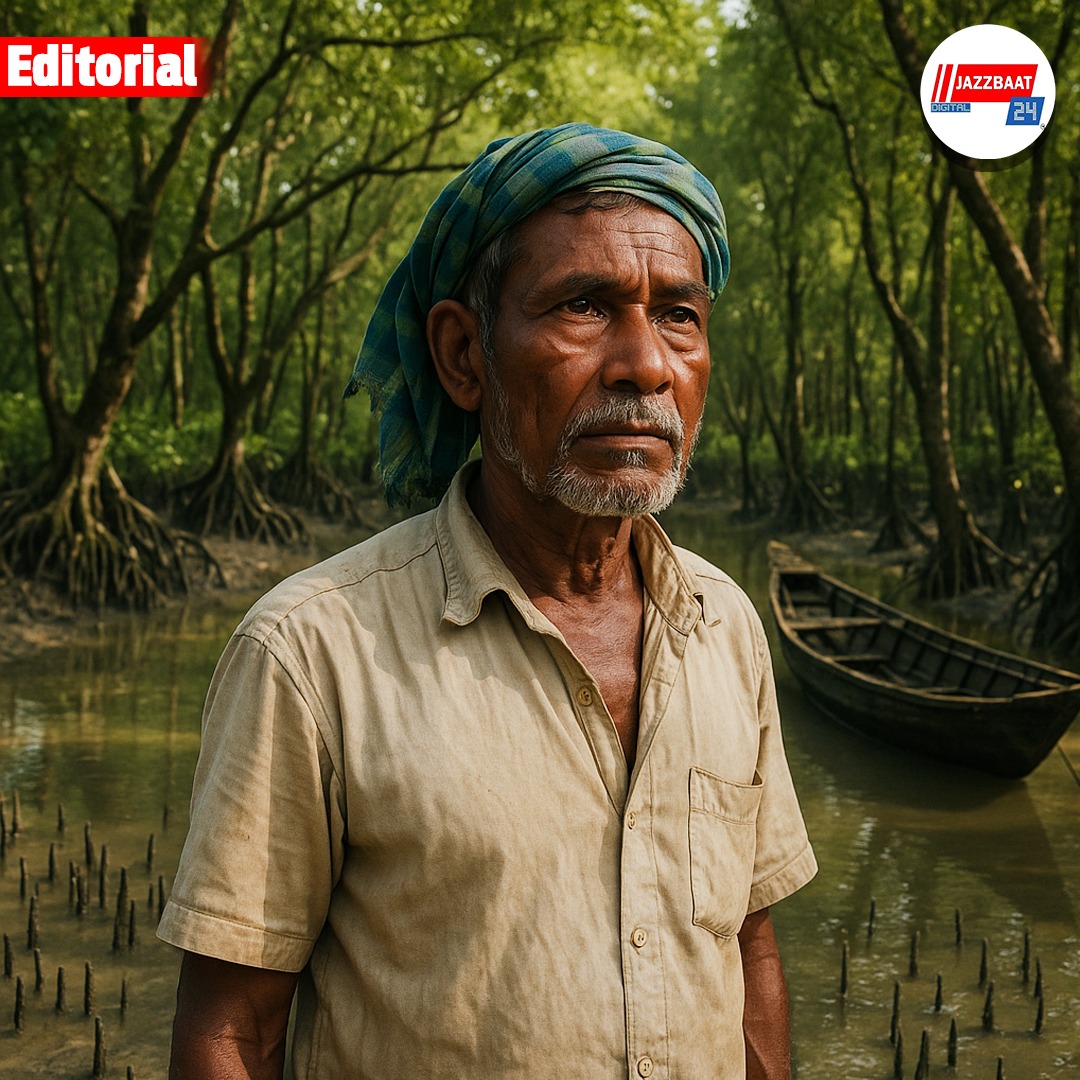
The fate of the Sundarbans has always been determined by the perspective of outsiders. But those who were actually born and raised on this land, whose lives and livelihoods are closely linked to this natural environment, have never been given importance. Chapal is one of them—a house of mud, a life at risk, but with deep confidence he said, “Our real home is inside the forest.”
The Indian part of the Sundarbans is spread over an area of about 4,000 square kilometers. Out of the 102 islands here, 54 are inhabited. The region is divided into six blocks in North 24 Parganas and thirteen blocks in South 24 Parganas. About 50 million people live here, who today face various crises such as cyclones, tidal surges, irregular rainfall, etc. caused by the impact of climate change.
Cyclone Aila in 2009 was a huge blow to the region. However, the previous major cyclone occurred in 1988. But in the last six years, five major cyclones, including Fani and Bulbul (2019), Amphan (2020), Yas (2021) and Remal (2024), have hit the region. Usually, we label such natural disasters as ‘natural’. But in reality, not everything is ‘natural’.
In fact, a distorted environmental policy and incompatibility with nature developed by humans over many years are the main reasons for today’s disaster. Not following the laws of nature, clearing mangrove forests, obstructing the natural flow of water, changing the hydrology of the land for monoculture agriculture—all of these things had laid the foundation for the current danger long ago.
In the colonial era, the Sundarbans were ‘jungles’—that is, ‘unused’ land—in the eyes of the British. In the 1780s, the East India Company encouraged the settlement of poor, marginalized people in the region for economic profit. The company's financial crisis at the time, and the 'mega corporate bailout' of 1773—which is considered the first in history—had an impact on this decision. Their goal was to clear the mangrove forests to create land for rice cultivation.
In the 1880s, the British used the mangrove forests for timber extraction. The so-called 'scientific forest management' was introduced. This increased human-animal conflict. In 1883, the government announced that a reward of 50 taka would be given for killing a tiger and 10 taka for killing a tiger cub. Today, this figure may seem insignificant, but at that time it was a huge amount.
After independence, around 1980, the government focused on tiger conservation. Various laws were enacted to protect the mangroves. But as a result, the rights of local people to use the forest were reduced. Professions that had once been developed for colonial purposes were also banned.
The islands where people live now have almost no mangrove forests. The water flow of the islands has been completely changed to make them suitable for agriculture. In other words, an agro-based system has been developed in a way that is incompatible with nature. Many people here work as fishermen or beekeepers during the monsoon, and then go out for a few months and work as daily wage laborers. But unfortunately, if the mangrove forests are brought back naturally, this agro-based economy will collapse. Therefore, the government is leaning towards protecting local livelihoods on the one hand and building concrete dams through ‘development’ projects on the other.
In this context, the author’s conversation with Chapal was a revelation. Sitting in a mud house, the author, somewhat surprised, wanted to know where they lived during storms. Chapal said that during Cyclone Amphan, they took shelter in the forest by boat. The author was stunned. Chapal laughs and says, “The forest is our second home, we go there every day to catch fish and crabs.”
This one sentence captures the real reality.
We know that mangrove forests are a powerful barrier against natural disasters—a coastal defense wall. But it is difficult for people who have grown up with an urban mindset and modern education to think of this forest as a ‘safe haven’. Yet for the people here, this forest is their protection.
The fate of the Sundarbans has been determined for centuries in the eyes of outsiders—sometimes by imagining it as a tiger habitat, sometimes by building dams, and sometimes by removing local people in the name of protecting and conserving the forest. Whether it is the ‘scientific’ theory of deforestation or economic exploitation—all decisions have been made from an outside perspective. Yet, none of the opinions of those like Chapal who have known this nature for generations have been given importance.
The world is now recognizing that mangrove forests are the birthplace and breeding ground for many marine species. They are a powerful shield against climate change—very effective in storing carbon, and resilient to cyclones, floods, and tidal surges. But the stakes in this complex reality in the Sundarbans are very high.
If appropriate policies and measures can be adopted, then it is possible to create a new economic model—using the knowledge of local, experienced people like Chapal—that works in harmony with nature, and improves local lives and livelihoods while keeping the mangrove forests intact.
If we walk this path, perhaps one day we will see that the people, forests, and economy of the Sundarbans—all can thrive, not at the cost of one another, but together.